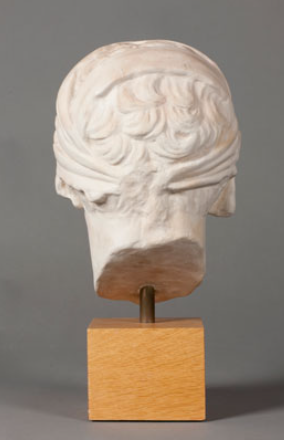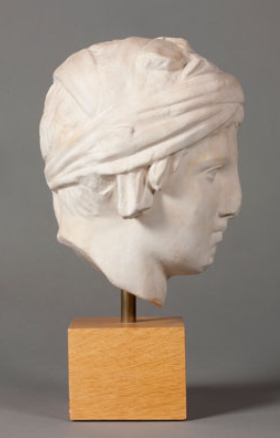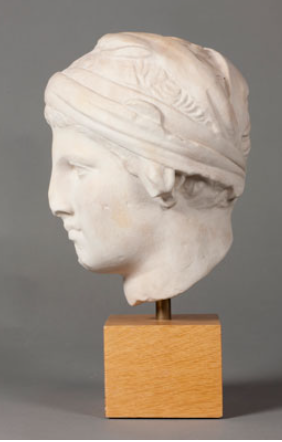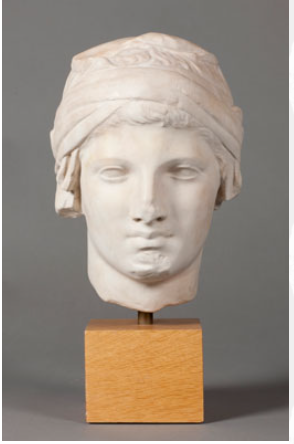Plaster cast, Ministry of Culture Casts and Reproductions, Greece, 1988
Purchased, 1996
Dimensions: H 26cm
Acc #: CC26, James Logie Memorial Collection
Copy of a marble head of a youth, late first century BC
Found at the Ancient Agora, Athens
National Archaeological Museum, Athens, #: 457
Style
The original work from which this head is copied was made in the late first century AD, when Greece was a Roman province ruled by the Roman emperor. Some of the features, such as the treatment of the eyebrows and nose, the smooth quality of the skin, and the passive expression, distinctly recall Classical and late Classical styles of the fifth and fourth centuries BCE.
This is a distinctly Roman portrait, and not necessarily a copy of an earlier Greek work. Several features are of interest in this regard. The most important of these is the hair, which peeps out from under the head covering. The locks are miniature versions of the “crab-claw” locks that appear on all portraits of the Roman emperor, Augustus, and on male portraits of the early first century AD. The headcovering, which consists of a cloth band wound around the head and with the ends looped up and secured over the ears, has been described as a turban.




